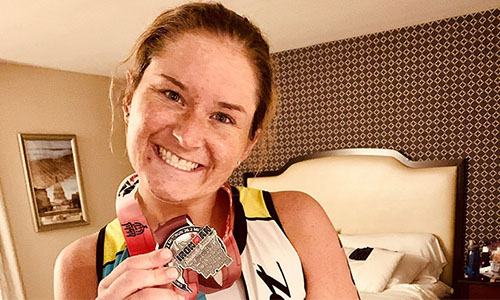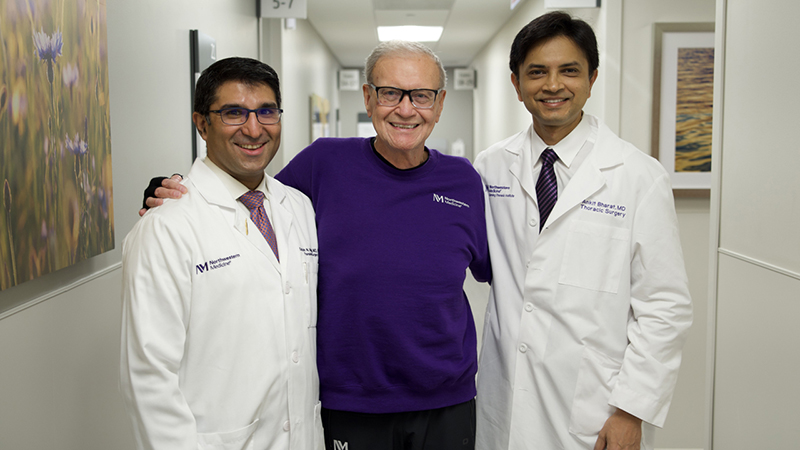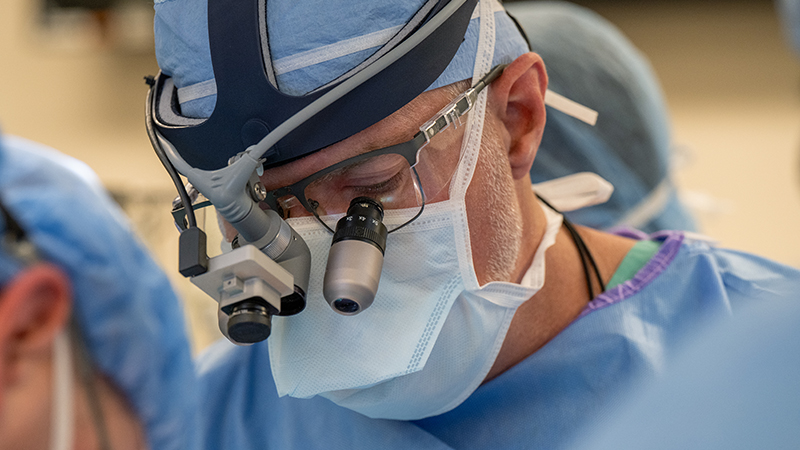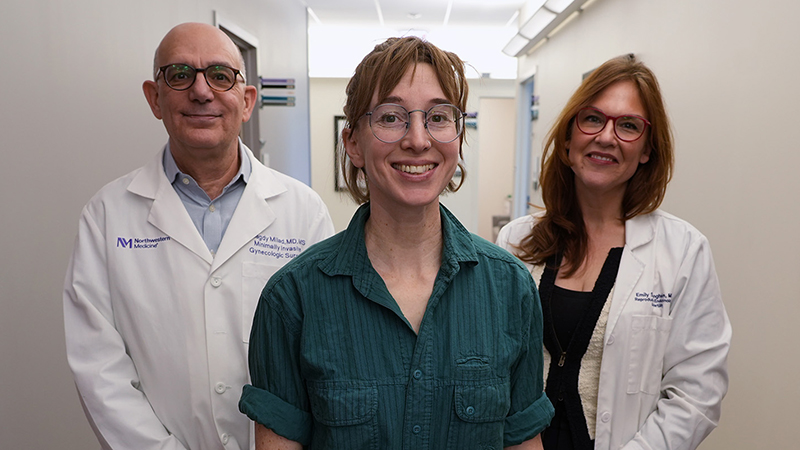‘I Heard a Crack and Pop’
Published February 2020
Despite Multiple Fractures, Ironman Achieves Ultimate Goal
Stephanie Kuehn, 26, comes from a family of athletes. So it makes sense that Stephanie became an Ironman — a title she earned through dedication and setbacks, including a broken hip and multiple stress fractures.

The Goal: Complete an Ironman
Stephanie’s story really began three decades ago. Her parents met while they were recovering from torn rotator cuffs under the guidance of Jim Beitzel, CI, PES, clinical athletic trainer and clinical coordinator for the Northwestern Medicine Athletic Training & Sports Performance Clinic. Beitzel explains, “Knowing her parents like I do, who were both decorated athletes, you can see where Stephanie’s character and habits come from. She is one of those athletes that sees setbacks as a challenge.”
Stephanie, a 7th grade teacher and volleyball coach, started participating in triathlons after college. She then set her eyes on her next goal: an Ironman triathlon, which involves a 2.4-mile swim, a 112-mile bicycle ride and a 26.2-mile (marathon) run. During training, Stephanie suffered her first injury ― a stress fracture in her tibia ― just months before she was set to compete. After scaling back her running, she completed the Half Ironman. “I had a great race, so I kept training and going,” she says.
When she started having hip pain before the full Ironman race, she sought the help of Northwestern Medicine Physiatrist Steven E. Mayer, MD, an Ironman himself.
Because the pain was manageable, Stephanie felt comfortable going ahead with the race. On race day, she completed the swimming and biking portion without issue, and was well on her way to achieving her hard-earned goal. But during the running portion of the event, she heard “a pop and a crack.” She says, “I instantly knew something was wrong.”
Yet, despite not being able to run, Stephanie proceeded to walk 5 more miles, dragging her leg behind her. It was a feat, explains Dr. Mayer, that is almost unbelievable. “I don’t think there’s anyone else I know of who would have kept moving after a fracture,” he says. But, when Stephanie saw her dad at mile 12.5, she finally broke down. And with that, Stephanie pulled out of the race.
Overcoming Multiple Injuries
The next day, she went to see Dr. Mayer. “She had a very severe injury. When you have a hip fracture, especially at her age, it needs to be surgically fixed,” he says.
X-rays revealed Stephanie had a displaced fracture, so she was admitted for surgery the next day under the care of Northwestern Medicine Regional Medical Group Orthopaedic Surgeon Gregory P. Witkowski, MD. “We were able to promptly coordinate care so there was no delay in treatment,” he says. Dr. Witkowski secured Stephanie’s hip fracture using a sliding hip screw, which keeps the fracture aligned anatomically and supports body weight while the fracture is properly healing.
After 8 months of healing, Stephanie suffered yet another devastating blow: a femoral stress injury on the other side, likely a result of overcompensating from the previous hip fracture. At this point, Stephanie was convinced she’d never be able to do another long-distance sporting event. “After that third injury, I just didn’t think it was in the cards for me anymore,” she says.
That’s when Stephanie’s story came full circle. “Jim Beitzel was the person who convinced me I could do this again,” she says. “He told me we would get through this. This isn’t a career-ending injury.”
“This was something I wanted so badly, so I knew I had to be intentional with my healing,” she says. And so, with the support of Dr. Mayer, Beitzel and her coaches, Stephanie began training once again. It required long hours and constant dedication, even when she felt like everything was “crumbling back to square one. Jim was the voice in my head to keep going,” she explains.
Crossing the Finish Line ― Finally
Almost as if a reflection of her journey, it was overcast the day of the Ironman race, and the water was cold and choppy. The conditions would be particularly challenging. As if on cue, Stephanie saw her mother, who was also competing, at the half marathon mark. “There were a lot of tears,” she recalls. “It was what I needed.”
“There are no words to describe the last mile that I was running,” she continues. “All these hard months and obstacles were worth it because it got us here. I remember getting to the red carpet and walking so I could take it all in.”
Along her journey, Stephanie’s dedication and achievement inspired those around her. “It’s one of the most inspiring stories I’ve had in my 14 years of practicing. She went from not being able to walk to finishing 140 miles successfully within two years,” says Dr. Mayer, who attended the race to support Stephanie.
She went from not being able to walk to finishing 140 miles.— Steven E. Mayer, MD
Her students decorated her classroom with signs and streamers. Meanwhile, former classmates, who had watched her suffer through her injuries, reached out to congratulate her.
Although in some ways it was the end of a long journey, the fact is, this was just the beginning. Stephanie plans to compete again. “There’s no stopping her,” Dr. Mayer says.
“I’ve had some great friendships and moments through it,” Stephanie reflects. “And I’ve been a changed person because of it.”





